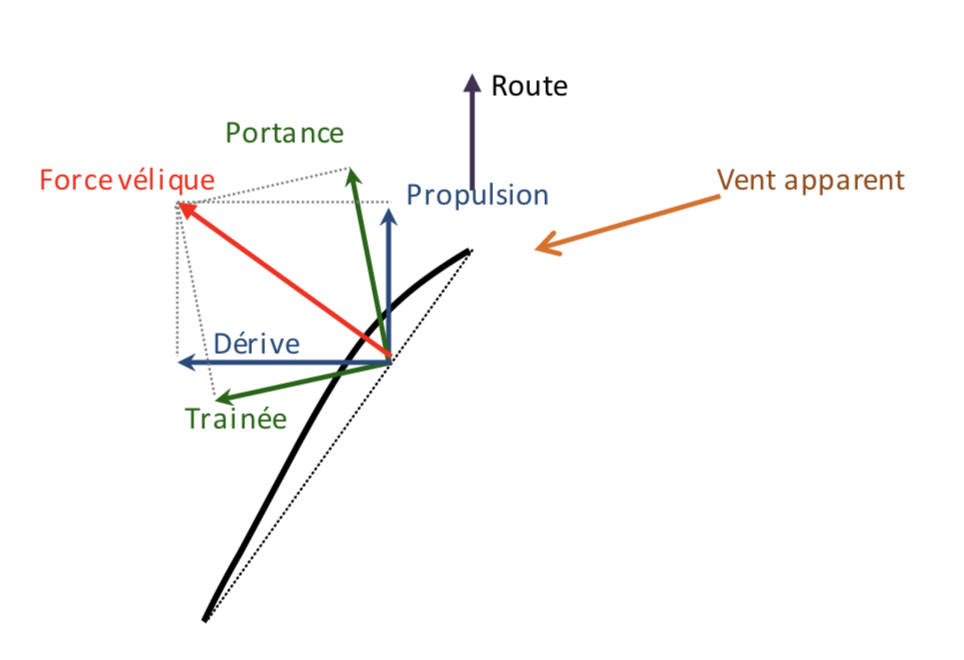Aerodynamic force / velocity force #
Component of the velocity force #
The aerodynamic force or vellic force is the sum of an infinite number of elementary “small forces”. Aero force
Sail efficiency #

Velic polar
The \(Cz\) is the coefficient of lift while the \(Cx\) is the coefficient of drag. These dimensionless numbers represent the values of lift and drag (for the same speed).
The maximum aerodynamic efficiency of a sail is obtained for the maximum glide ratio which is the maximization of the ratio \(Cz/Cx\) . Be careful, max efficiency does not mean maximum speed.
Moreover, this curve is only aerodynamic and does not show the need for power to overcome the drag of the hull in the water.
Its interest is to show us the range of use of the apparent wind:
- above 45° of incidence, we are in a vortex regime.
- At 20°, we start to see a separation (on the trailing edge side) which will only increase (towards the leading edge).
Hydrodynamic force #
Water is a fluid, so everything we said before remains valid. There is therefore, as for the sail, a hydrodynamic force. It is usually broken down into anti-drift force and drag. The rudder, which has a large dimension, is also an anti-drift element.

Hydro force top view

Hydro force from behind
Weight and buoyancy #
The weight is the mass of the boat and its crew subjected to the earth’s gravity.

Action of gravity

Archimedean thrust
- The weight is vertical and applies to the center of gravity ( \(CG\) ) of the system: boat + crew.
- The buoyancy is applied at the center of buoyancy ( \(CC\) ): center of gravity of the immersed parts.
